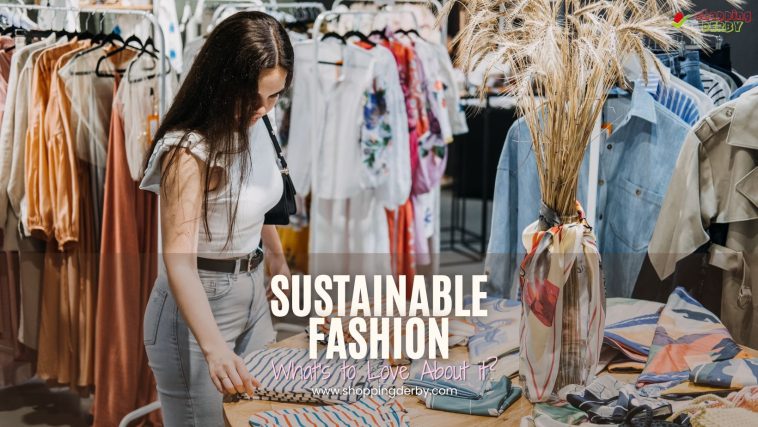Have you ever felt the rush of excitement when you score a trendy outfit at an unbelievably low price? You’re not alone! Fast fashion has taken the world by storm, and millions of people flock to stores and online shops to snag the latest styles at a fraction of the cost. But why are so many hooked on fast fashion shopping? What makes it so irresistible that even when we know the environmental and ethical concerns, we still find ourselves reaching for that shopping cart?
In this article, we’ll take a deeper dive into why people are so drawn to fast fashion. We’ll explore how it works, why it’s so cheap, and why so many of us just can’t resist the urge to buy more. From quick trends to irresistible prices, let’s unpack the mystery of fast fashion and how it became a global shopping phenomenon.
What Exactly is Fast Fashion?
Fast fashion refers to clothing that is designed, produced, and sold to consumers at a rapid pace, often mimicking high-fashion trends seen on the runway or celebrity culture. These items are mass-produced in a short time, allowing stores to restock their shelves with the latest styles regularly. Fast fashion brands often release new collections multiple times a year, keeping the styles fresh and on-trend.

The idea behind fast fashion is to offer trendy pieces at affordable prices. While traditional fashion might take months to create, fast fashion can go from concept to store in just a few weeks. But with this speed come a few consequences, which we will discuss later.
Why Is Fast Fashion So Cheap?
Let’s face it: one of the biggest reasons people love shopping fast fashion is because of the price. Clothing that looks expensive but costs very little is an attractive offer. So, how do these stores manage to keep prices so low? Here are some of the key factors that contribute to the affordability of fast fashion:
1. Low Production Costs
Fast fashion brands often produce clothing in countries where labor and manufacturing costs are low. Many companies outsource production to countries in Asia, such as China, Bangladesh, and India, where wages for workers are much lower compared to Western countries. By cutting labor costs and utilizing cheaper materials, brands can produce large quantities of clothing at a fraction of the cost of traditional fashion houses.
2. High Volume Production
Fast fashion brands produce clothing in mass quantities. The more they make, the less they spend per unit, thanks to economies of scale. By churning out large volumes of a single design or style, they can spread out the costs of design, materials, and labor over many pieces, significantly lowering the cost per item. This high-volume production is one of the main reasons fast fashion items can be sold at lower prices.
3. Quick Turnaround Times
The speed with which fast fashion brands turn around new designs is another reason their clothing remains affordable. Unlike traditional fashion, which takes months to go from the runway to retail, fast fashion brands aim to have new styles in stores in as little as two weeks. This quick turnaround allows brands to react to consumer demand more rapidly and avoid overproduction or excess inventory, reducing waste and unsold goods that would have to be discounted or discarded.
4. Low-Quality Materials
To keep costs low, fast fashion brands often use cheaper materials such as polyester, acrylic, and other synthetic fabrics instead of more expensive natural fibers like cotton, wool, or silk. These materials are often less durable and of lower quality, but they allow brands to produce clothing at a much lower cost. While this keeps prices down, it can also result in garments that wear out faster.
5. Minimal Design and Simple Production Processes
Fast fashion items often feature simple designs that don’t require a lot of intricate stitching or special details, reducing the time and labor involved in production. These designs are often inspired by trends, so they don’t need to be highly original or complex. Simple cuts, basic fabrics, and minimal embellishments allow manufacturers to produce items quickly and cheaply.
6. Limited Design Innovation
Fast fashion brands focus on producing clothing that’s “on-trend” rather than innovating with new, high-quality designs. They often take inspiration from high-end fashion collections or celebrity styles and then replicate those looks with inexpensive materials and mass production techniques. This means they don’t need to invest as much in research and development, which helps keep costs low.
7. Economies of Scale in Distribution
Fast fashion brands often operate on a global scale, distributing their products to multiple markets at once. This widespread distribution allows companies to leverage economies of scale in their logistics. By selling large quantities of clothes across multiple countries, they can drive down shipping and transportation costs, which helps keep prices low for the consumer.
8. Aggressive Pricing Strategies
Fast fashion companies often use aggressive pricing strategies to attract more customers. They frequently offer discounts, seasonal sales, and promotions, further driving down the price of each item. Because these brands focus on volume sales, they can afford to sell products at lower prices while still maintaining profit margins. This pricing strategy is designed to create a sense of urgency, encouraging consumers to buy more in order to “save” money on trendy items.
9. Lower Overhead Costs
Many fast fashion brands have streamlined their business operations to keep overhead costs low. For example, brands like Shein and ASOS primarily operate online, which eliminates the need for expensive storefronts, real estate, and large staff. By reducing their operating costs, these companies are able to pass on the savings to the consumer, offering clothing at lower prices than traditional retail stores.
10. Disposable Fashion Model
Fast fashion is built around the concept of “disposable fashion,” meaning that clothing is made to be worn for a season or two before being replaced with newer styles. This model encourages frequent buying and helps maintain low prices since clothing is not expected to last long. While this means consumers can buy new items more often, it also means that brands don’t have to worry about producing durable, long-lasting products.
The Psychological Hook: Why Are People So Addicted to Fast Fashion Shopping?
Now that we know why the prices are so attractive, let’s take a look at why shopping fast fashion is so addictive for so many people. It’s more than just affordable clothing; there are psychological factors at play that make us want to buy more than we need.
1. Instant Gratification
Shopping fast fashion provides an immediate sense of satisfaction. The thrill of finding a trendy piece at a great price is almost like a mini celebration. When you buy something new, it can make you feel good about yourself, especially if you’re wearing a piece that aligns with current trends. The immediate reward can become a habit, causing you to feel the urge to keep shopping.
2. Constant New Arrivals
The key to fast fashion’s success is the constant release of new items. With stores and websites always updating their inventory, shoppers are encouraged to buy frequently to avoid missing out on the latest styles. This sense of urgency is a tactic used by brands to keep customers coming back. When you know that new trends are always on the horizon, you feel compelled to buy something new before it’s gone.
3. Affordable Prices Make Shopping Feel Guilt-Free
Because the items are so cheap, there’s a certain psychological freedom that comes with shopping fast fashion. You don’t have to think too much about spending, and you may feel less guilty when you buy multiple items. When you can get an entire outfit for what you might pay for a single designer piece, it’s easy to justify the purchase.
4. Social Media Influence
Social media plays a huge role in fast fashion’s popularity. Influencers, bloggers, and celebrities often post photos wearing the latest fast fashion pieces, making them seem trendy, accessible, and desirable. Seeing your favorite influencers or people you admire wearing something can create a sense of social pressure, nudging you to buy similar items.
5. Peer Pressure and FOMO
Fear of missing out (FOMO) is another powerful driver behind fast fashion shopping. If you see your friends, family, or even strangers on social media wearing the same piece or brand, you might feel like you need it to fit in or to keep up with current trends. This peer influence can drive people to purchase items they might not have considered otherwise.
The Dark Side of Fast Fashion
While fast fashion shopping might feel good in the moment, there are some consequences that we can’t ignore. The cheap prices and rapid turnaround come at a cost, not just to the environment but to the workers who make these clothes.
1. Environmental Impact
Fast fashion is notoriously harmful to the environment. The rapid production of low-cost clothing contributes massive amounts of waste. According to the Environmental Protection Agency (EPA), over 17 million tons of textile waste are generated every year in the U.S. alone, much of which comes from discarded fast fashion. Additionally, the production processes often involve harmful chemicals, dyeing practices, and unsustainable materials, which contribute to pollution and environmental degradation.
2. Poor Working Conditions
Many fast fashion brands outsource production to factories in developing countries where labor laws may be weak. Workers, often paid low wages, endure poor working conditions in unsafe environments. This raises serious ethical concerns about the treatment of people who make these clothes.
3. Low Quality and Short Lifespan
Fast fashion is designed to be disposable. Because the materials used are cheap and the manufacturing process is rushed, these clothes don’t last as long as higher-quality pieces. As a result, people end up discarding them after a few wears, contributing to even more waste. The cycle of buying cheap, low-quality clothing only to replace it in a few months creates an unsustainable shopping habit.
Is Fast Fashion Shopping Worth It?
Today, the trend of fast fashion shopping offers undeniable convenience and instant gratification, but it’s important to understand the broader consequences. While the affordable prices, trendy styles, and constant updates make it tempting, the environmental and ethical costs are something to consider.
Ultimately, it comes down to being aware of the impact your choices have. If you love fast fashion but want to be more mindful, there are ways to shop more sustainably, like choosing eco-friendly brands or focusing on quality over quantity. At the end of the day, knowing why we love shopping fast fashion can help us make better, more informed decisions—whether that means choosing a sustainable alternative or simply understanding the reasons behind our shopping habits.
Fast fashion may continue to reign supreme, but it’s worth thinking about whether it’s worth the cost in the long run.



